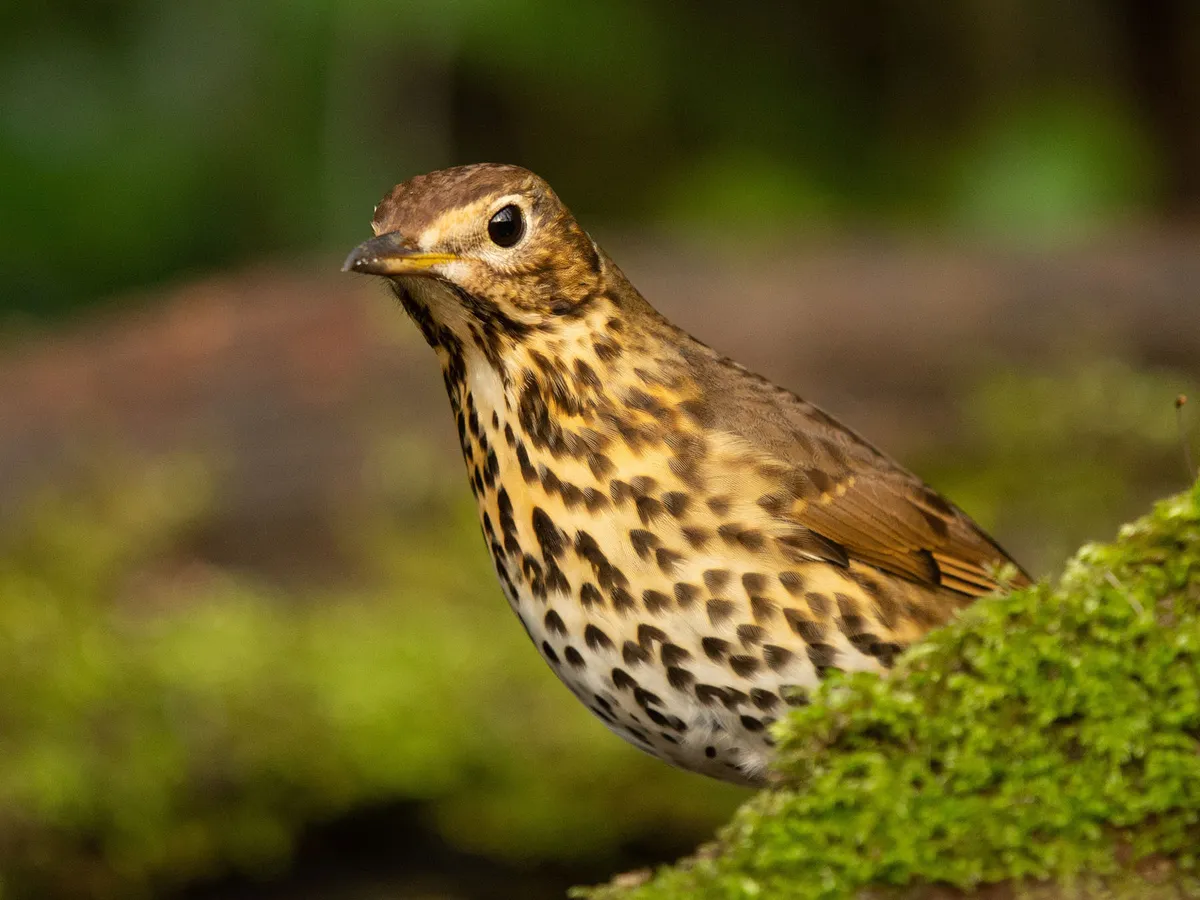
In the enchanting world of avian wonders, the Song Thrush stands out as a symbol of both simplicity and musical brilliance. This small bird, with its captivating singing voice, has endeared itself to bird enthusiasts and nature lovers alike. As we delve into the nuances of its appearance, behavior, and habitat, we uncover the story of a charming troubadour of the avian realm
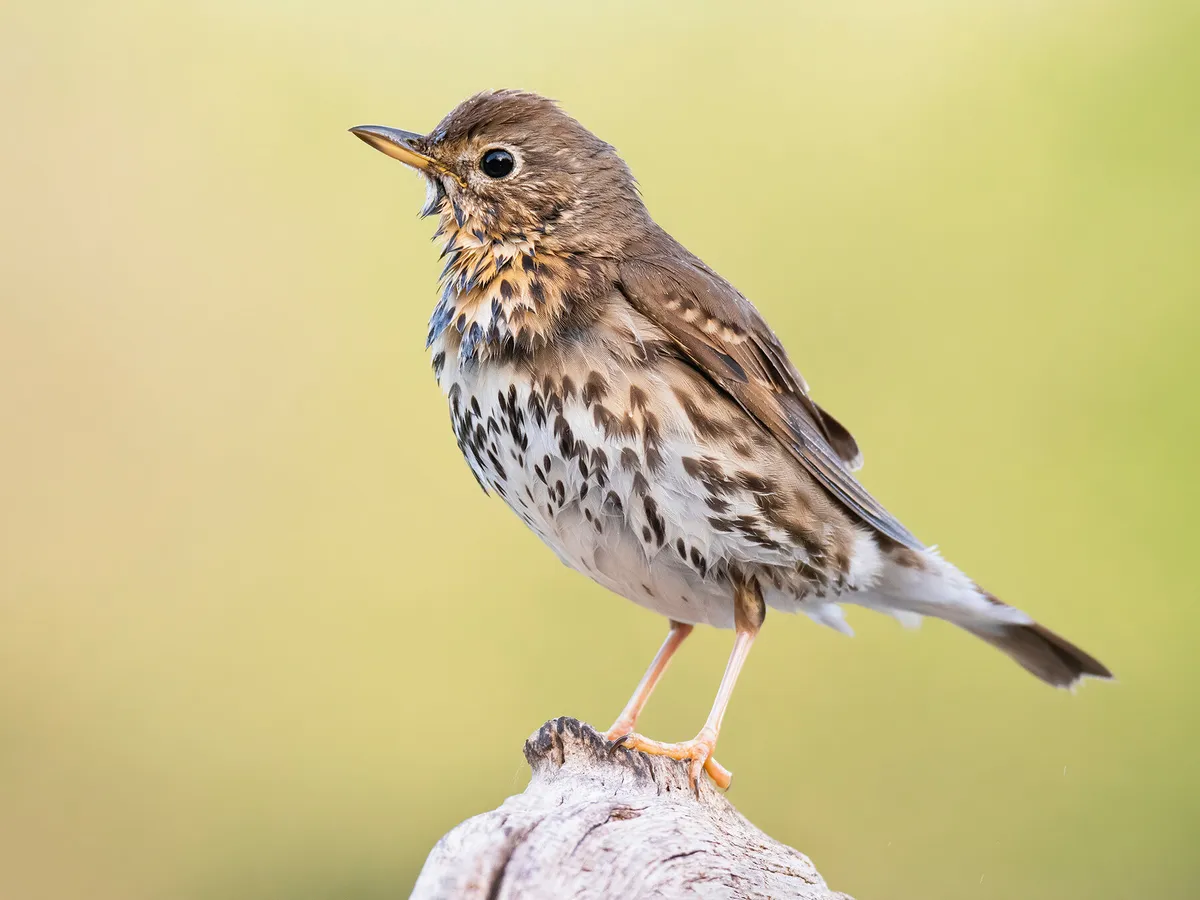
In the realm of Song Thrushes, gender distinctions are subtle. Adult males and females share similar characteristics, yet the astute observer can identify juveniles by their streaked heads, upper backs, shoulders, and upper wing feathers, which boast shades of orange and buff.

Yet, it’s not the Song Thrush’s appearance but its melodic prowess that truly defines it. A symphony of phrases, each repeated two to four times, weaves its song. The male performs this melodic masterpiece during the soft light of dawn and dusk. Moreover, it possesses a repertoire of alarm and excitement calls, serving as a defense against intruders and predators.
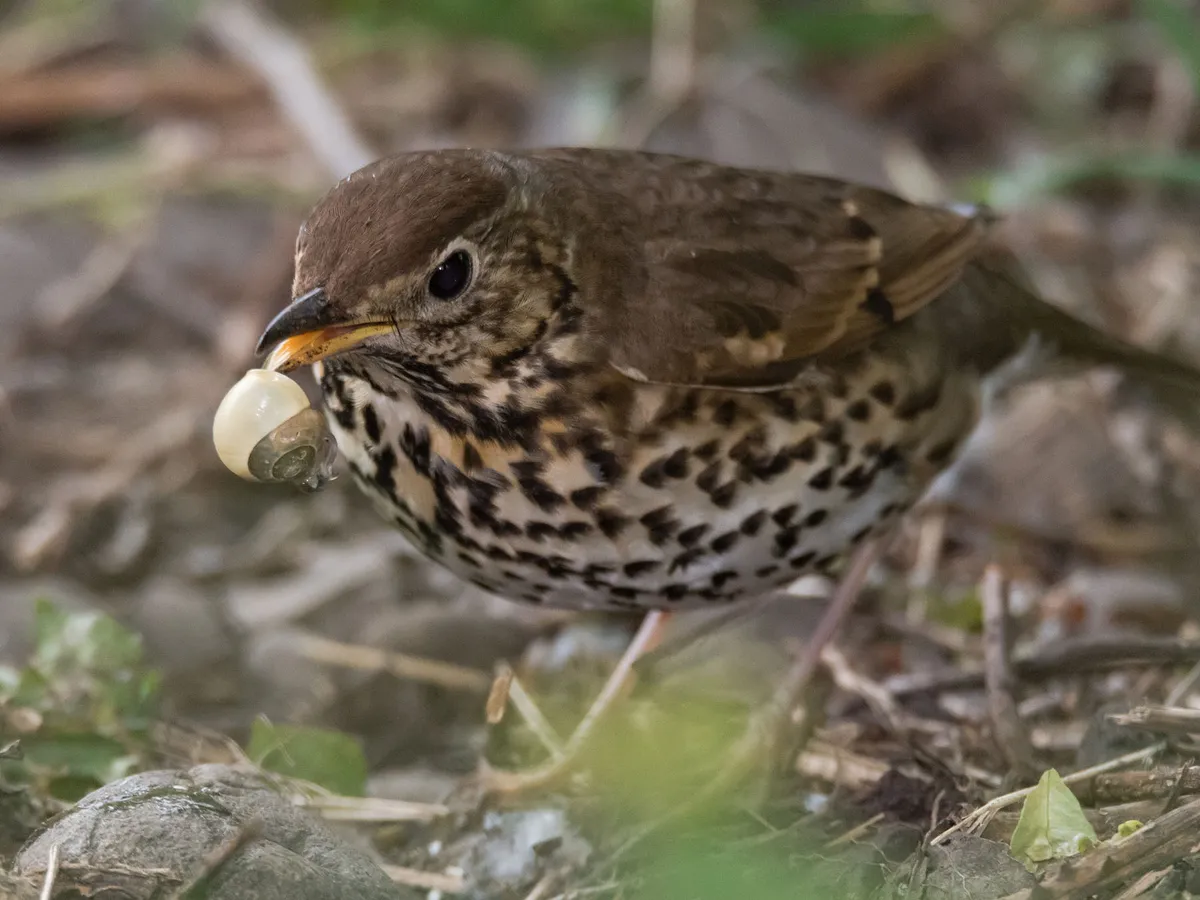
A culinary connoisseur, the Song Thrush’s diet is a mix of insects, worms, caterpillars, and other small creatures. A culinary twist enters its menu in the form of snails, which it skillfully breaks against hard surfaces to reveal the succulent meal within. In the rhythm of nature, the bird’s diet shifts, embracing fruits and berries as autumn leads to winter and insects become elusive.
Parental care weaves a story of nurturing, as both Song Thrush parents diligently provide their chicks with small insects and invertebrates. Fledglings take flight after a mere two weeks in the nest, yet parental support endures for another one to three weeks.

Yet, the Song Thrush’s presence carries a bittersweet tale. Once abundant, its numbers have dwindled due to shifts in land use and habitat degradation. A story of conservation concern unfolds, as it navigates an altered landscape.
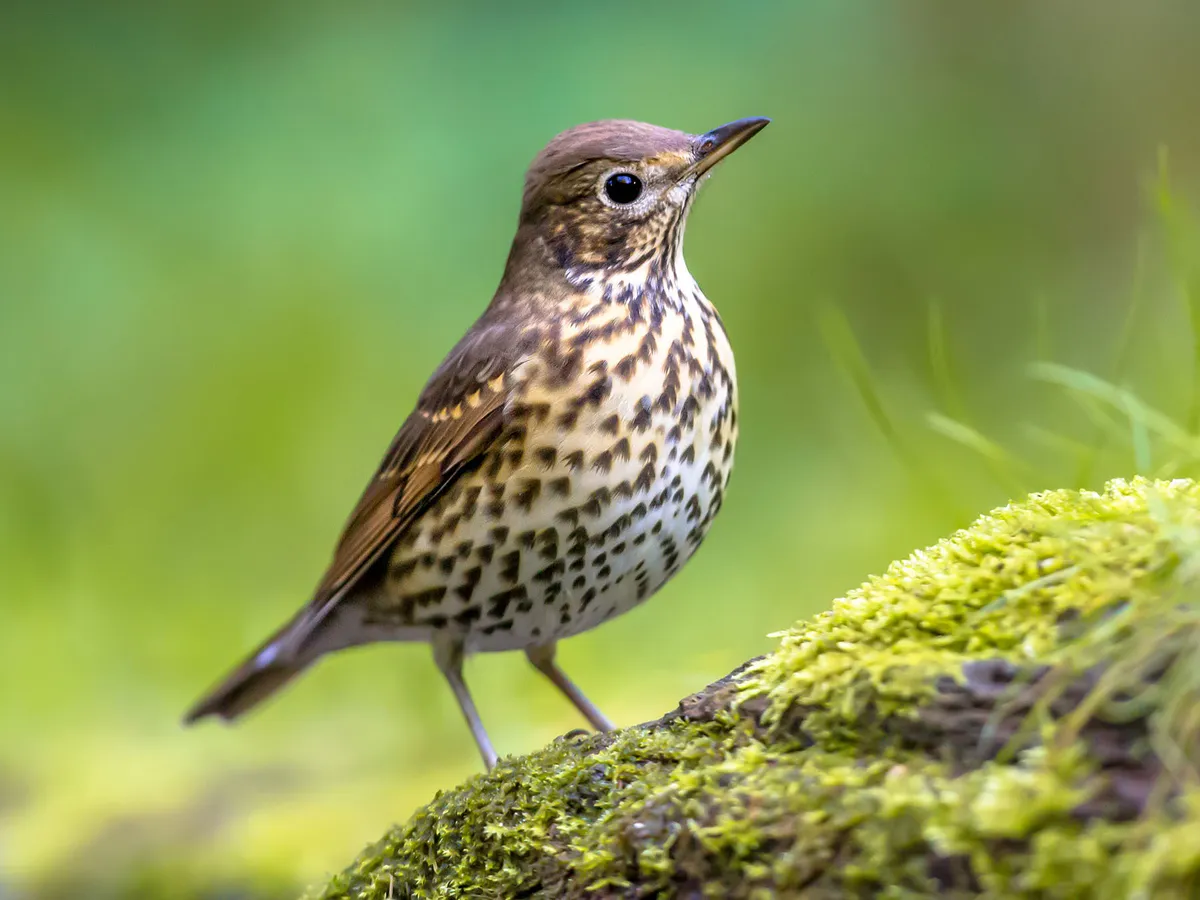
Intriguingly solitary and shy, yet potentially tame, the Song Thrush’s flight is a swift, slightly jerky affair. Its stance stands tall and upright, while its song resounds from exposed tree-top perches.

Legal guardianship envelops the Song Thrush in the UK, courtesy of the Wildlife and Countryside Act of 1981. Its Amber conservation status underscores its need for protection, driven by significant population declines.
While challenges persist, the Song Thrush defies the brink of endangerment, maintaining a global status as a ‘Least Concern’ species. A beacon of hope in a world of fluctuating biodiversity.
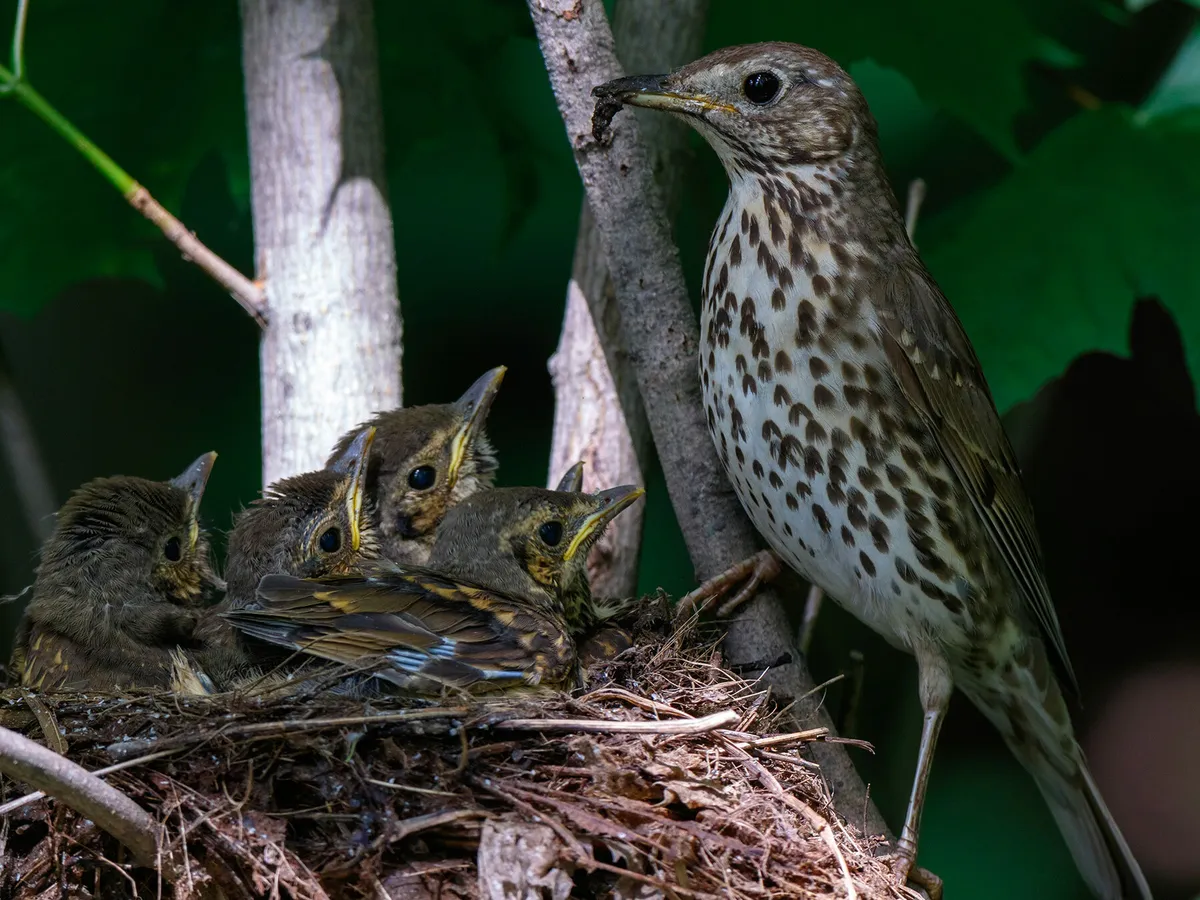
Monogamy finds a seasonal home, as Song Thrushes pair off for the breeding season. The intricate tapestry of their lives sees mates reconnecting in subsequent years, weaving a tale of fidelity.
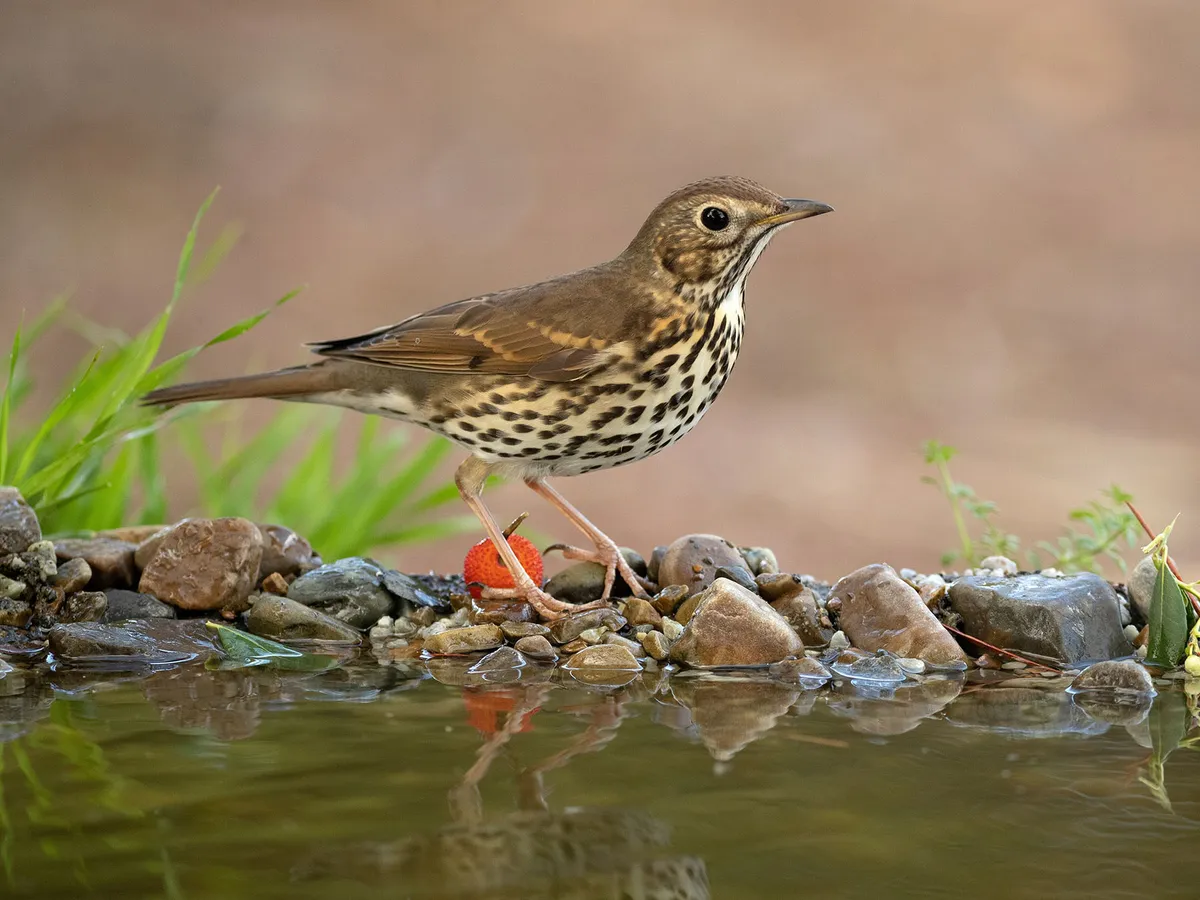
On the ground and amid leaf litter, the Song Thrush’s presence is a dance of short bursts. A rhythm of nature resonates, and even amidst competition, its melodious song is a testament to its individuality.
As seasons shift, so does the Song Thrush’s presence. Its wings touch distant lands, from the UK to Northern Mongolia, navigating the ebb and flow of migration. A tale of resilience unfolds, a testament to the delicate balance of existence.
 In the heart of its song, the Song Thrush captures the essence of nature’s symphony. Its story is one of adaptation, of seeking harmony amidst changing landscapes. As this tiny avian virtuoso continues to serenade the world with its music, it beckons us to pause and celebrate the delicate threads that weave through the tapestry of life.
In the heart of its song, the Song Thrush captures the essence of nature’s symphony. Its story is one of adaptation, of seeking harmony amidst changing landscapes. As this tiny avian virtuoso continues to serenade the world with its music, it beckons us to pause and celebrate the delicate threads that weave through the tapestry of life.


